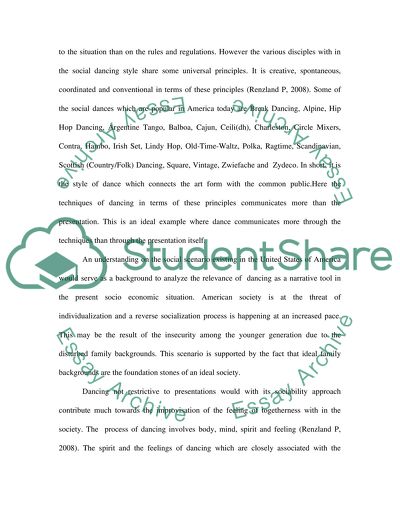Cite this document
(“All dance is narrative not only in its presentation but also in its Essay”, n.d.)
All dance is narrative not only in its presentation but also in its Essay. Retrieved from https://studentshare.org/visual-arts-film-studies/1627147-all-dance-is-narrative-not-only-in-its-presentation-but-also-in-its-form-its-technique-and-its-ways-of-continuing-its-lineage
All dance is narrative not only in its presentation but also in its Essay. Retrieved from https://studentshare.org/visual-arts-film-studies/1627147-all-dance-is-narrative-not-only-in-its-presentation-but-also-in-its-form-its-technique-and-its-ways-of-continuing-its-lineage
(All Dance Is Narrative Not Only in Its Presentation But Also in Its Essay)
All Dance Is Narrative Not Only in Its Presentation But Also in Its Essay. https://studentshare.org/visual-arts-film-studies/1627147-all-dance-is-narrative-not-only-in-its-presentation-but-also-in-its-form-its-technique-and-its-ways-of-continuing-its-lineage.
All Dance Is Narrative Not Only in Its Presentation But Also in Its Essay. https://studentshare.org/visual-arts-film-studies/1627147-all-dance-is-narrative-not-only-in-its-presentation-but-also-in-its-form-its-technique-and-its-ways-of-continuing-its-lineage.
“All Dance Is Narrative Not Only in Its Presentation But Also in Its Essay”, n.d. https://studentshare.org/visual-arts-film-studies/1627147-all-dance-is-narrative-not-only-in-its-presentation-but-also-in-its-form-its-technique-and-its-ways-of-continuing-its-lineage.


